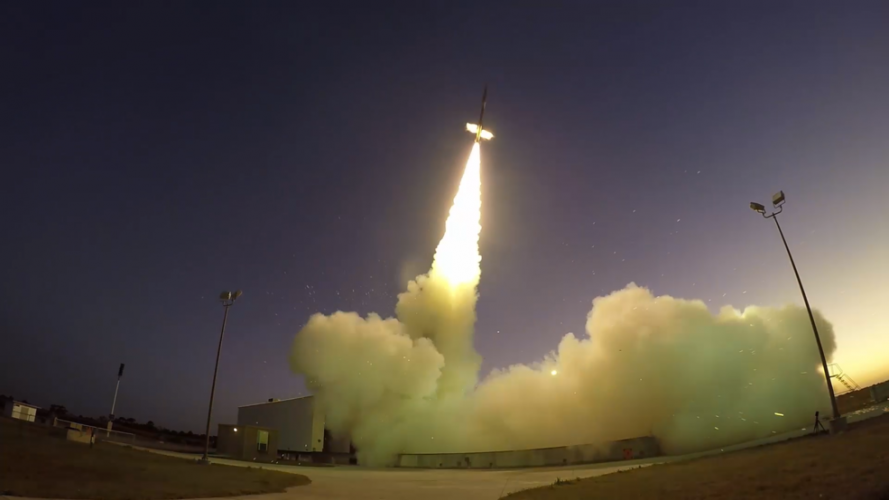
The first test of the Advanced Supersonic Parachute Inflation Research Experiment (ASPIRE) took place on October 4 at the NASA Goddard Space Flight Centre's Wallops Flight Facility in Virginia. A 17.7m Black Brant IX sounding rocket carried the payload to a maximum altitude of over 50km.
Less than a minute later, at an altitude of 42km and a velocity of 1.8 times the speed of sound, the test conditions were met and the parachute was successfully deployed. Made from a combination of nylon, Technora and Kevlar, ASPIRE was launched from the vehicle at almost 100mph, inflating in about half a second and generating roughly 16 tons of drag force.
"It is quite a ride," said Ian Clark, the test's technical lead from NASA's Jet Propulsion Laboratory in Pasadena, California.
"The imagery of our first parachute inflation is almost as breathtaking to behold as it is scientifically significant. For the first time, we get to see what it would look like to be in a spacecraft hurtling towards the Red Planet, unfurling its parachute."
"Everything went according to plan or better than planned. We not only proved that we could get our payload to the correct altitude and velocity conditions to best mimic a parachute deployment in the Martian atmosphere, but as an added bonus, we got to see our parachute in action as well."
When the 2020 mission vehicle enters the Martian atmosphere, it will be travelling at over 12,000 mph (5.4km/s). The parachute used in this first test is similar to the one used for NASA's Mars Science Laboratory in 2012. However, future tests will evaluate the performance of a strengthened parachute that could also be used in future missions, and the Mars 2020 design will be finalised closer to launch.




Nanogenerator consumes CO2 to generate electricity
Whoopee, they've solved how to keep a light on but not a lot else.